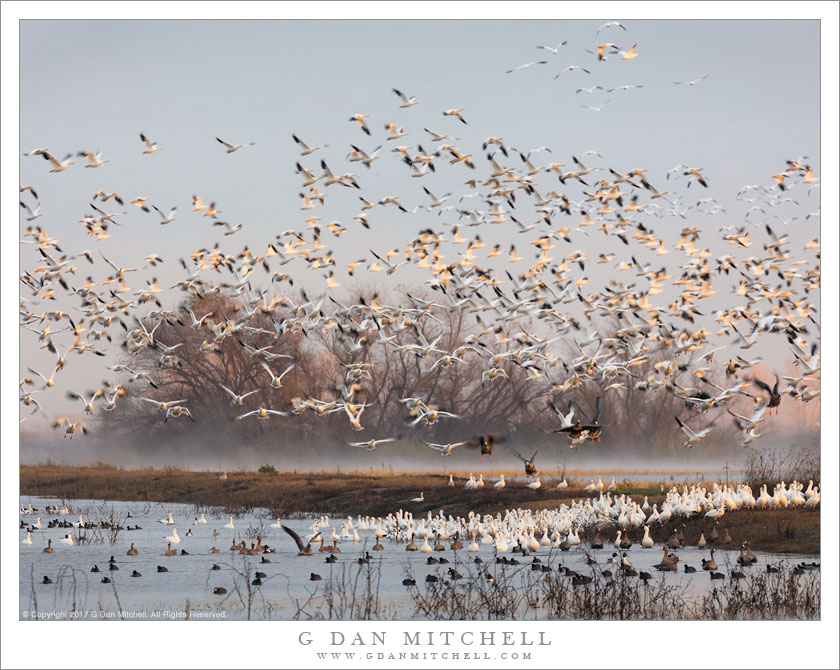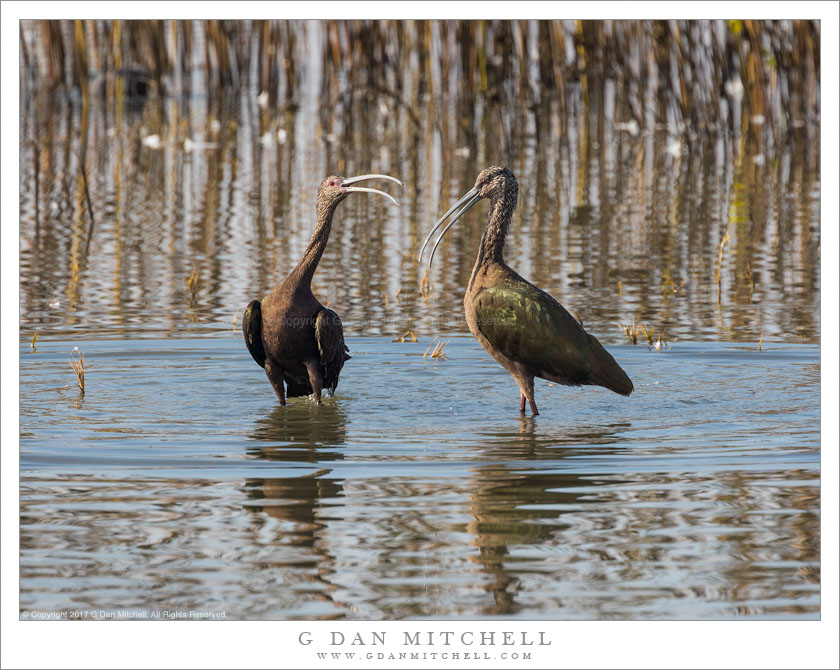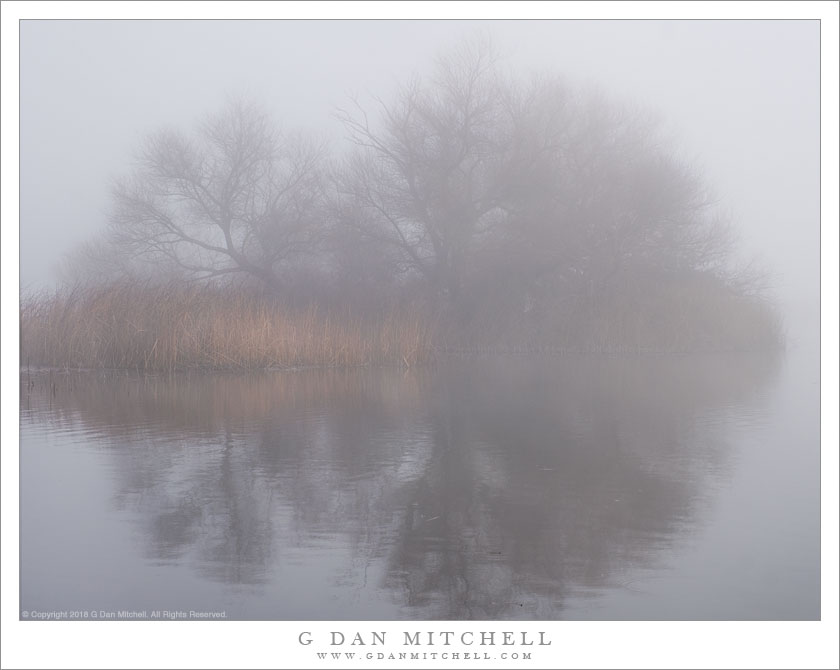
Morning Fly-Out. © Copyright 2018 G Dan Mitchell – all rights reserved.
Migratory geese take to the air in morning light and thin tule fog
As I mentioned in an earlier post, I am (finally!) going back and revisiting my 2017 (!) photographs. I usually review the previous year’s raw files each December as I come up with my annual favorites post. However, I didn’t do that post (yet) for 2017, and I therefore missed that all-important opportunity look through the year’s raw file archive. Why is that important? For various reasons, which could be the subject of an article at some point, I miss some interesting photographs right after I make them — perhaps I had to move on to other subjects, I may not yet have been able to “see” the images for what they are, etc.
This comes from the very beginning of 2017, in the middle of winter. In many parts of the country winter is when migratory birds show up, as they arrive in our relatively warmer climate from areas that may be literally frozen during this season. Geese are among the long-distance travelers, and every fall and winter I look forward to their return all up and down the California flyway. I photographed this group early in the morning as the sun arrived and the birds began to leave their overnight accommodations in wetland ponds.
See top of this page for Articles, Sales and Licensing, my Sierra Nevada Fall Color book, Contact Information and more.
 G Dan Mitchell is a California photographer and visual opportunist. His book, “California’s Fall Color: A Photographer’s Guide to Autumn in the Sierra” is available from Heyday Books and Amazon.
G Dan Mitchell is a California photographer and visual opportunist. His book, “California’s Fall Color: A Photographer’s Guide to Autumn in the Sierra” is available from Heyday Books and Amazon.
Blog | About | Flickr | Twitter | Facebook | LinkedIn | Email
All media © Copyright G Dan Mitchell and others as indicated. Any use requires advance permission from G Dan Mitchell.



